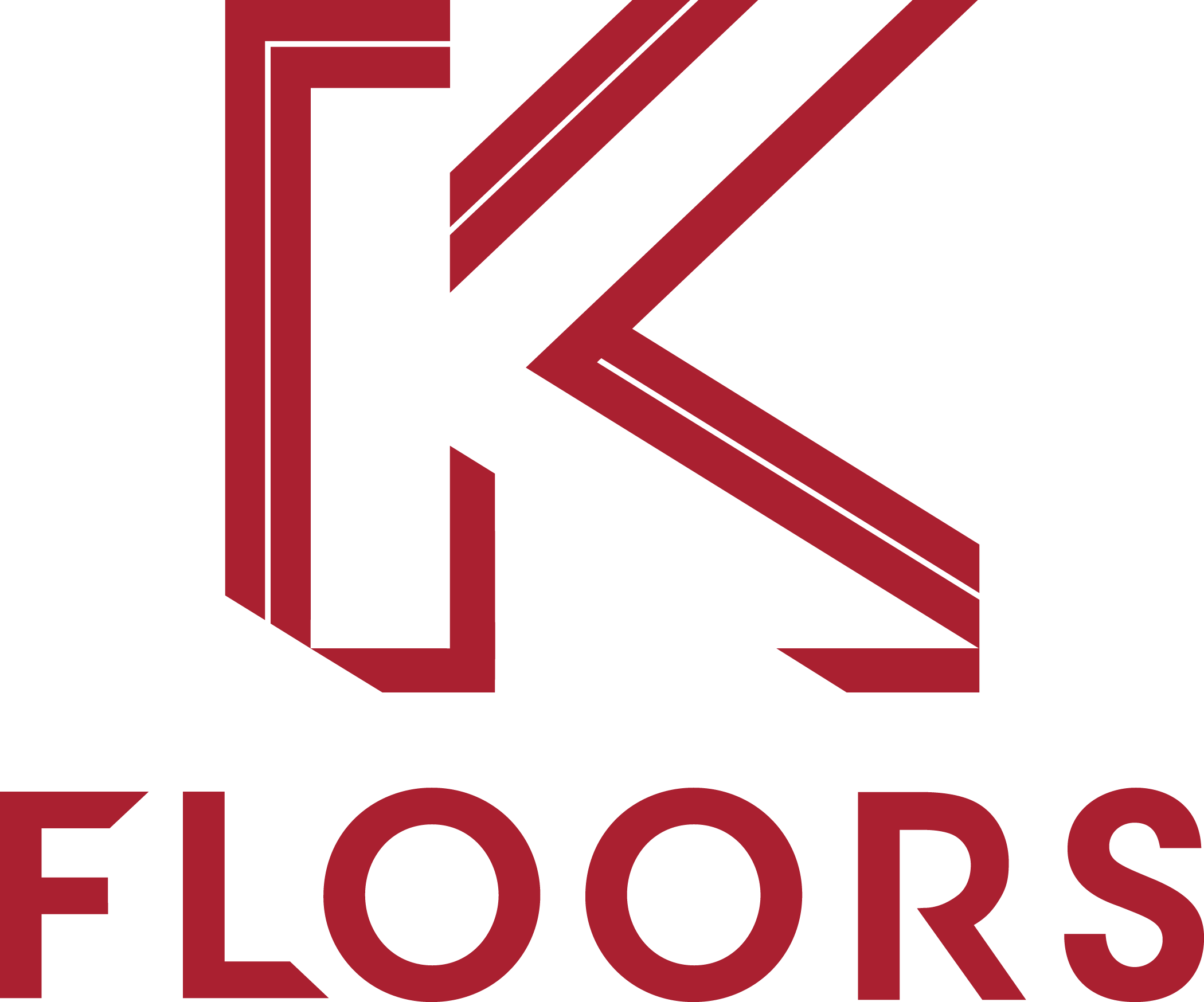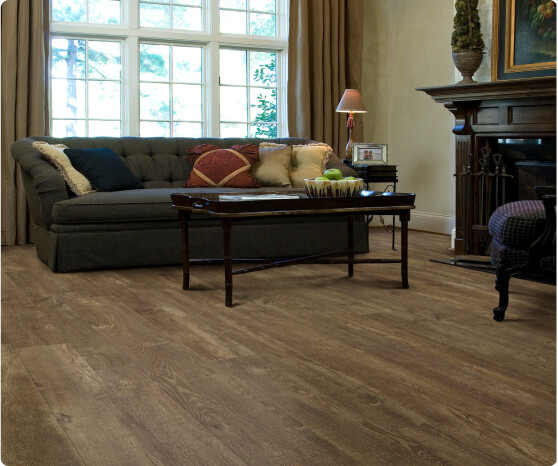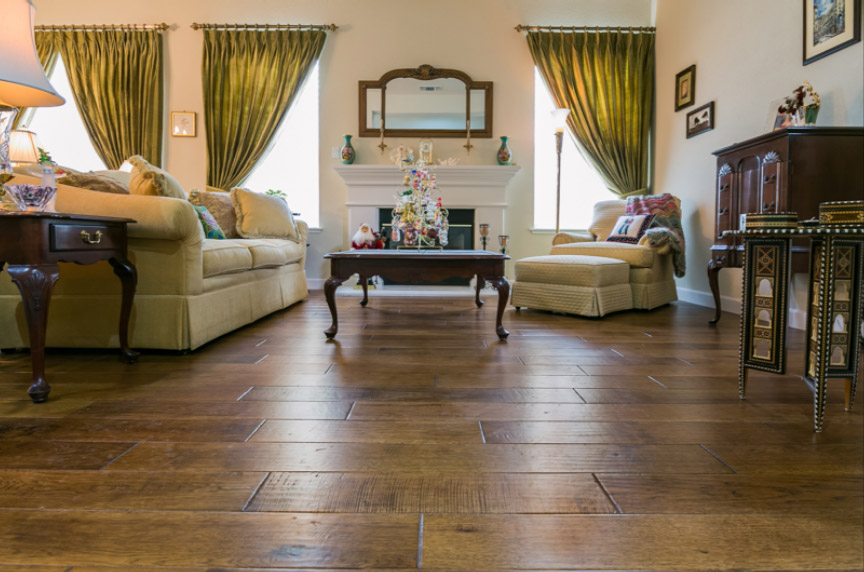Flooring is a crucial aspect of interior design, significantly influencing the aesthetic appeal, functionality, and overall ambiance of a space. However, choosing and installing the right flooring can be challenging. Many homeowners and designers make common mistakes that can compromise the beauty and functionality of a space. This comprehensive guide explores ten common flooring design mistakes and provides practical solutions to avoid them.
Table of Contents
Toggle1. Ignoring Room Functionality
The Mistake:
Choosing flooring without considering the room’s primary function is a common error. For instance, using carpet in a kitchen or bathroom is impractical due to moisture issues, while hardwood may not be suitable for areas with heavy foot traffic and potential water exposure.
How to Avoid It:
- Assess Usage: Consider how the room will be used. High-traffic areas like hallways and living rooms need durable materials like tile, laminate, or engineered wood.
- Moisture Considerations: For kitchens and bathrooms, opt for water-resistant or waterproof options like ceramic tile, vinyl, or stone.
- Comfort and Warmth: Bedrooms and living areas benefit from softer, warmer options like carpet or cork.
2. Neglecting Subfloor Preparation
The Mistake:
Overlooking the importance of a properly prepared subfloor can lead to problems such as uneven surfaces, cracks, and squeaking floors. This is a fundamental mistake that can affect the longevity and appearance of the flooring.
How to Avoid It:
- Inspect and Repair: Thoroughly inspect the subfloor for any damage or irregularities and repair them before installation.
- Leveling: Ensure the subfloor is level. Use self-leveling compounds if necessary.
- Clean and Dry: The subfloor should be clean and dry to prevent issues like mold growth and adhesive failure.
3. Mismatching Flooring Styles
The Mistake:
Choosing flooring that clashes with the overall design style of the home can create a disjointed and aesthetically displeasing appearance. For example, rustic wooden planks in a modern, minimalist home might look out of place.
How to Avoid It:
- Consistency: Aim for a cohesive look by selecting flooring that complements the home’s style and other design elements.
- Sample Testing: Use samples to see how different flooring options look in the actual space.
- Professional Advice: Consult a designer if unsure about style compatibility.
4. Disregarding Room Size and Proportion
The Mistake:
Using flooring that doesn’t suit the size and proportions of a room can make a space feel cramped or awkward. For example, large tiles in a small bathroom can make it feel even smaller.
How to Avoid It:
- Appropriate Scale: Select flooring that matches the room’s scale. Smaller tiles or narrower planks are often better for smaller spaces.
- Optical Illusions: Use diagonal patterns or lighter colors to create an illusion of space in smaller rooms.
- Flow and Continuity: In open-plan areas, consistent flooring can make the space feel larger and more cohesive.
5. Overlooking Maintenance Requirements
The Mistake:
Choosing flooring without considering the maintenance it requires can lead to dissatisfaction. High-maintenance flooring in a busy household might not be practical.
How to Avoid It:
- Research: Understand the maintenance needs of different flooring types. For example, hardwood requires regular sealing and polishing, while tile is relatively low-maintenance.
- Lifestyle Match: Choose flooring that fits your lifestyle and maintenance capabilities. Vinyl and laminate are excellent choices for low-maintenance needs.
6. Inadequate Budget Planning
The Mistake
Underestimating the total cost of flooring, including installation, underlayment, and future maintenance, can lead to budget overruns and compromises on quality.
How to Avoid It
- Comprehensive Budget: Factor in all costs, including materials, installation, underlayment, and any additional treatments like sealing or staining.
- Quality Investment: Don’t skimp on quality to save costs upfront; cheaper materials may lead to higher expenses down the line due to repairs or replacements.
- Contingency Fund: Set aside a contingency fund for unexpected expenses.

7. Poor Color Choices
The Mistake:
Choosing flooring colors that don’t harmonize with the room’s color scheme or lighting can result in a discordant look. Dark floors in poorly lit rooms can make the space feel gloomy, while very light floors in high-traffic areas can show dirt more easily.
How to Avoid It:
- Lighting Consideration: Evaluate the room’s natural and artificial lighting before selecting a floor color.
- Color Cohesion: Choose colors that complement the existing palette of the room.
- Practicality: Consider the room’s use when choosing colors; medium tones often hide dirt and wear better than very light or very dark options.
8. Incorrect Installation Methods
The Mistake:
Improper installation, such as incorrect spacing or not allowing for expansion, can lead to issues like buckling, warping, and gaps in the flooring.
How to Avoid It:
Professional Installation: Whenever possible, hire professional installers with experience in the specific flooring type.
- Manufacturer Guidelines: Follow the manufacturer’s installation instructions meticulously.
- Acclimatization**: Allow the flooring material to acclimatize to the room’s temperature and humidity before installation.
9. Ignoring Underlayment Importance
The Mistake:
Neglecting the appropriate underlayment can affect the comfort, noise level, and durability of the flooring. This is particularly crucial for floating floors like laminate or engineered wood.
How to Avoid It:
- Type Matching: Choose an underlayment suitable for the flooring type and the subfloor. For example, foam or cork underlayment for laminate flooring.
- Moisture Barrier: In moisture-prone areas, use an underlayment with a moisture barrier.
- Sound Insulation: Consider underlayment that provides sound insulation for multi-level homes or apartments.
10. Ignoring Environmental Impact
The Mistake:
Selecting flooring without considering its environmental impact can be a significant oversight. This includes the sustainability of the materials and the indoor air quality affected by off-gassing from certain flooring types.
How to Avoid It:
- Eco-friendly Options: Opt for sustainable materials like bamboo, cork, or reclaimed wood.
- Low VOC: Choose flooring with low volatile organic compound (VOC) emissions to ensure better indoor air quality.
- Certification: Look for certifications such as FSC (Forest Stewardship Council) or GREENGUARD to ensure environmentally responsible choices.
Conclusion
Avoiding these common flooring design mistakes requires careful planning, research, and sometimes professional advice. By considering the room’s functionality, ensuring proper subfloor preparation, maintaining a consistent style, and making informed choices about materials, colors, and installation methods, you can achieve a beautiful, durable, and cohesive flooring solution that enhances the overall design and functionality of your home.
Looking for the Perfect Flooring Design? Discover Your Match at K Floors in Concord, California!
K Floors isn’t just a flooring company; we’re your partners in creating spaces that embody quality and style. Our diverse range of flooring designs, from luxury vinyl to waterproof styles and vinyl planks, caters to every taste and need. Experience the K Floors difference. Our expert team is here to guide you, offering complimentary in-home consultations and a selection sourced from top vinyl suppliers. Explore our extensive collection and find not just a floor, but a reflection of your unique vision.
At K Floors, we blend traditional craftsmanship with modern design, ensuring every floor we install makes your space feel truly like home. Whether for residential or commercial projects, we’re committed to quality and authenticity. Visit us in Concord, California, and start your journey to the ideal flooring design with K Floors.
Disclaimer
The materials available on this website are for informational and entertainment purposes only and not to provide legal advice. You should contact your attorney to obtain advice concerning any particular issue or problem. You should not act or refrain from acting based on any content included in this site without seeking legal or other professional advice. The information presented on this website may not reflect the most current flooring developments. No action should be taken in reliance on the information contained on this website and we disclaim all liability concerning actions taken or not taken based on any or all of the contents of this site to the fullest extent permitted by law.




